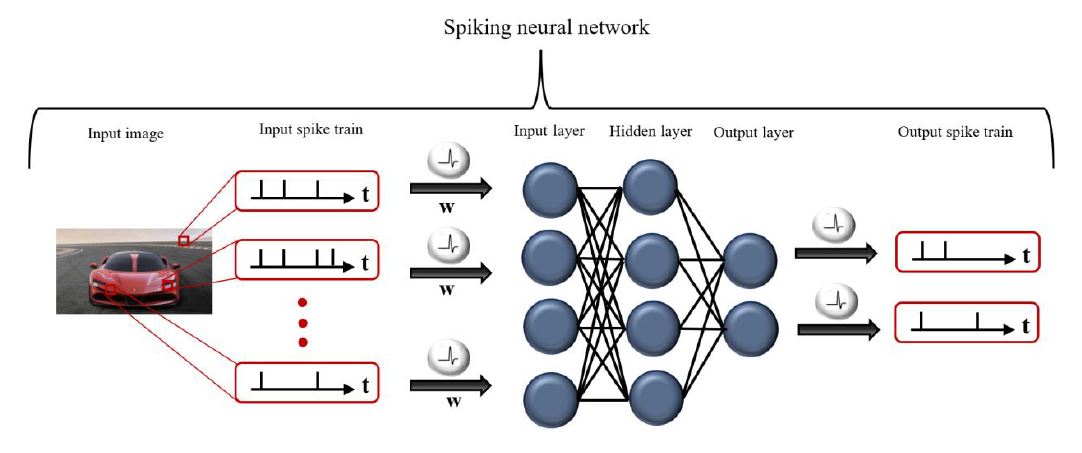Research
On-Going Research
Interpretability of Data Structures with Clusterability
Faculty: Kaixun Hua
Current clustering algorithms face issues such as erroneous results with datasets lacking a clear clustering structure, poor performance with complex datasets, and scalability problems with large datasets. To overcome these, we proposed a clusterability index, linked to ultrametricity measurement, to gauge if a dataset exists meaningful clusters. We are developing a special minmax-based matrix multiplication approach for the dissimilarity matrix, enabling it to converge to an ultrametric dissimilarity matrix via power operations. The clusterability degree is determined by the minimum power operations needed for convergence. This method, applicable to any dissimilarity matrix, provides a value in the final matrix that signifies the minimum edge between two nodes in a weighted graph. The resulting ultrametric distance matrix effectively captures complex structures in challenging datasets, enhancing the performance of centroid-based clustering algorithms.
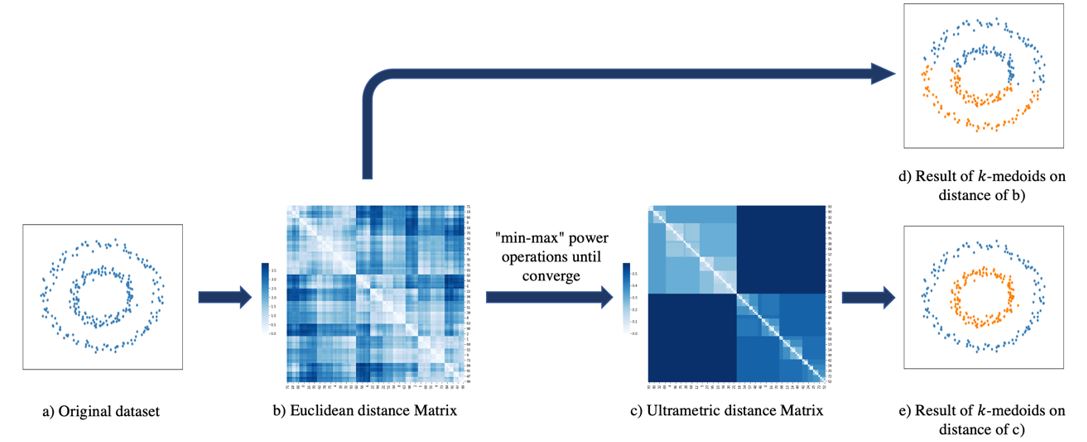
Explainable AI with Scalable Deterministic Global Optimal Training
Faculty: Kaixun Hua
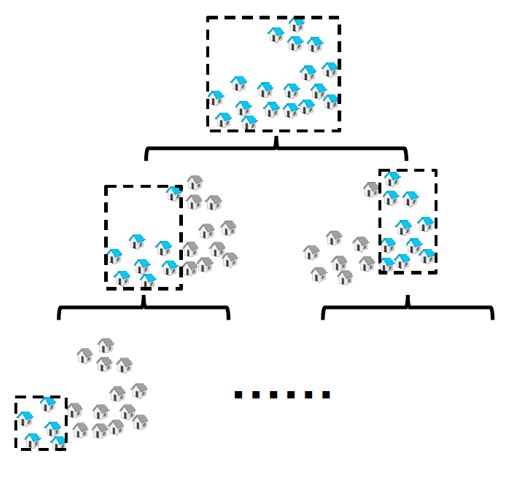
Given the NP-hard nature of numerous machine learning (ML) challenges like clustering, decision trees, and neural networks, it's often considered that achieving global optimality in ML tasks is computationally prohibitive. Consequently, prevalent methods lean on either heuristic or local optimization algorithms, resulting in less than optimal solutions. Another prevalent assumption in the ML field suggests that in the big data era, simple, highly interpretable models (like decision trees) can't match the predictive prowess of black-box models. However, in our project, we tend to construct a set of scalable training algorithms via a reduced-space branch and bound framework offering guaranteed global optimality, and thus challenging these assumptions. Our preliminary findings are twofold: 1) Detecting problem structure makes solving large-scale ML tasks to global optimality computationally possible. 2) Achieving global optimality significantly enhances the performance of simple, interpretable ML models on large datasets.
A deep reinforcement learning approach for power management of battery-assisted fast-charging EV hubs participating in day-ahead and real-time electricity market
Faculty: Tapas Das
Ph.D. student: Diwas Paudel
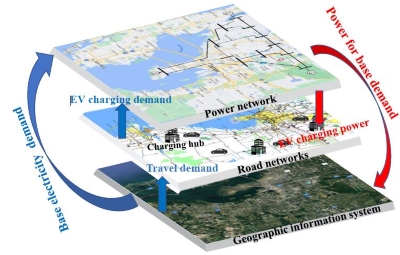
Fast-charging EV hubs solely focus on swift EV charging, akin to traditional gas stations. The EVs entering these hubs receive their requested charge and leave promptly without parking. Present Tesla supercharging stations are fast-charging examples, though smaller than the study's envisaged scale. Fast-charging hubs are intricately linked with power markets and transportation networks. Profitable hub operations necessitate an encompassing model that factors in power market dynamics, pricing mechanisms, and the random EV charging demand. These charging hubs source power from the grid via committed hourly purchases from the day-ahead (DA) market (low price volatility) and supplement from the real-time (RT) market (higher price volatility). Many of these hubs leverage battery storage systems (BSS) for profit optimization via arbitrage. We consider the fast-charging hub power management via a two-step methodology: in the first step, a mixed-integer linear optimization model determines DA commitments, then in the second step, a deep reinforcement learning based real-time power management model optimizes the balance of DA and RT power, along with BSS supply to meet the charging demand in the hub.
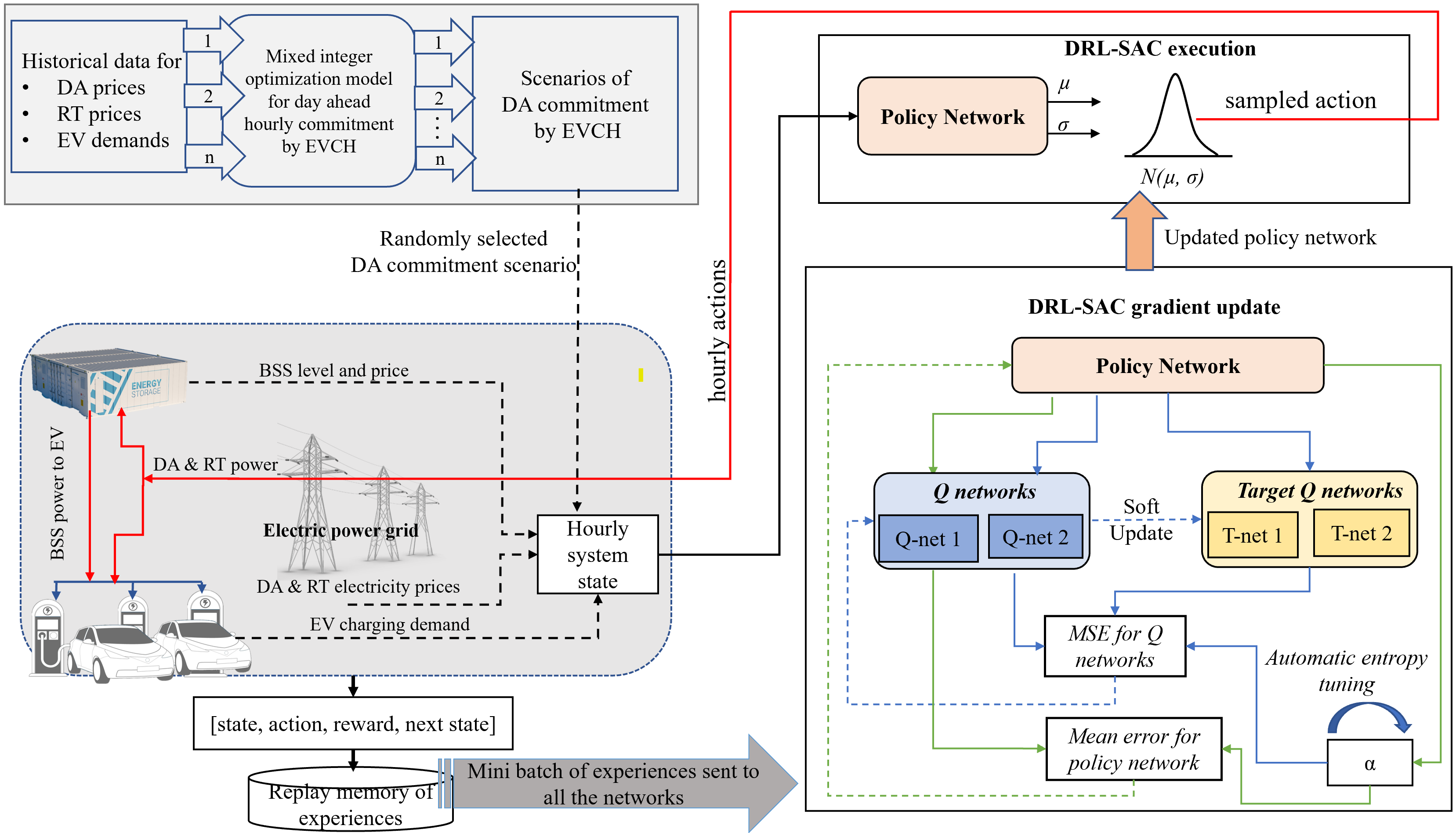
DOMAIN-KNOWLEDGE INTEGRATION IN DOMAIN-INFORMED MACHINE LEARNING AND MULTISCALE MODELING OF NONLINEAR DYNAMICS IN COMPLEX SYSTEMS
Faculty: Trung Le
Ph.D. student: Phat Kim Huynh
Nonlinear dynamical systems are widely used to model various phenomena in science and engineering. Recent advancements in sensing technologies have enabled the collection of large amounts of multi-modal sensor data. This data allows us to gain insights into complex system dynamics and build data-driven models without needing the underlying equations. However, due to data complexity and multi-modality, there is a need for efficient data sampling strategies and sophisticated data-driven methods for analysis and modeling.
The combination of big data analytics and data-driven machine learning has transformed the traditional analysis of dynamical systems. However, it's important to consider the laws of physics and domain knowledge to avoid ill-posed problems or non-physical solutions.
Multiscale modeling integrates multi-scale and multi-physics knowledge into data-driven frameworks, providing insights into complex system behaviors. Machine learning and multiscale modeling can complement each other to build robust forecasting models that incorporate underlying physics and address ill-posed problems.
This dissertation focuses on advancing data-driven methods for complex system dynamics modeling, integrating domain knowledge into physics-informed machine learning, and developing mathematical frameworks and theories for multi-resolution systems modeling.
The proposed methods aim to achieve three goals: (1) efficiently represent and integrate domain knowledge in physics-informed models, (2) address multi-scale and multi-physics problems by advancing state-of-the-art models, and (3) establish a theoretical foundation for optimal sampling strategies, error and convergence analysis, and nonlinear dynamical models for complex systems.
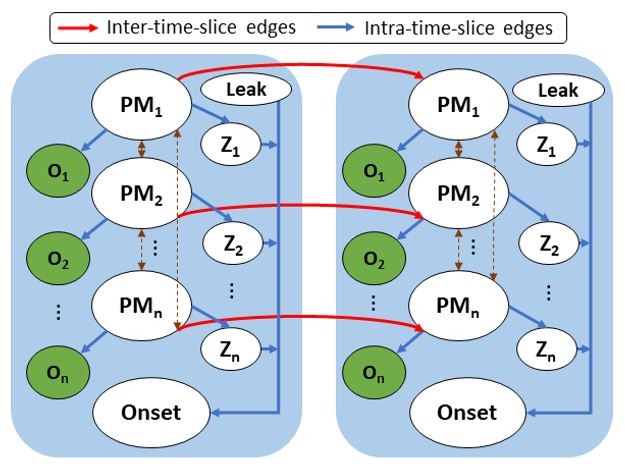
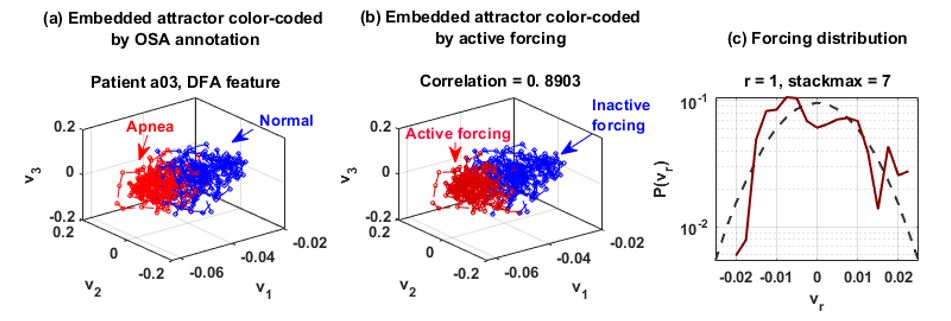
Developing a Reliable and Trustworthy AI System through IoT Data Collection, Federated Learning, and Data-Centric AI
Faculty: Trung Le
Ph.D. Student: Quoc H. Nguyen
This research addresses the challenges of maintaining data privacy and security while upholding the performance and accuracy of AI systems. It explores the application of Federated Learning techniques, enabling model training on decentralized data sources without the need to share raw data. This approach ensures that sensitive information remains localized while harnessing the collective knowledge of distributed models. Moreover, the study delves into the concept of Data-Centric AI, emphasizing the significance of data quality, provenance, and reliability. By incorporating data governance principles, robust data preprocessing techniques, and accountability measures, the transparency and trustworthiness of AI systems can be enhanced. Additionally, an IoT system is being developed for seamless data collection. This IoT system leverages diverse IoT devices and sensors to gather real-time and contextual data from various sources. By collecting a comprehensive and diverse dataset, it facilitates the training of robust AI models. In summary, this research aims to develop a robust framework for constructing reliable and trustworthy AI systems by integrating Federated Learning and Data-Centric AI principles. By addressing concerns regarding data privacy and trust in AI applications, this work has the potential to provide significant contributions in the field.
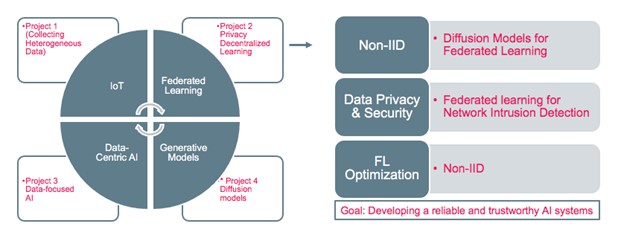
Deep VULMAN: A deep reinforcement learning-enabled cyber vulnerability management framework
Faculty: Ankit Shah
Ph.D. Student: Soumyadeep Hore
Cyber vulnerability management is a critical function of a cybersecurity operations center (CSOC) that helps protect organizations against cyber-attacks on their computer and network systems. Adversaries hold an asymmetric advantage over the CSOC, as the number of deficiencies in these systems is increasing at a significantly higher rate compared to the expansion rate of the security teams to mitigate them. The current approaches in cyber vulnerability management are deterministic and one-time decision-making methods, which do not consider future uncertainties when prioritizing and selecting vulnerabilities for mitigation. These approaches are also constrained by the sub-optimal distribution of resources, providing no flexibility to adjust their response to fluctuations in vulnerability arrivals. We propose a novel framework, Deep VULMAN, consisting of a deep reinforcement learning agent and an integer programming method to fill this gap in cyber vulnerability management process. Our sequential decision-making framework, first, determines the near-optimal amount of resources to be allocated for mitigation under uncertainty for a given system state, and then determines the optimal set of prioritized vulnerability instances for mitigation. Results show that our framework outperforms the current methods in prioritizing the selection of important organization-specific vulnerabilities, on both simulated and real-world vulnerability data, observed over a one-year period.
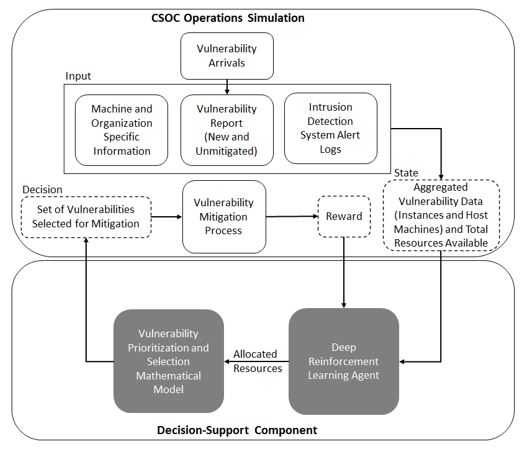
Solving Large Scale Hierarchical Vehicle Routing Problems with Genetic Algorithm and Supervised Learning
Faculty: Changhyun Kwon
PhD Student: Abhay Sobhanan
Solving large-scale instances of Hierarchical Vehicle Routing Problems, such as the Multi-Depot Vehicle Routing Problem (MDVRP) and the Capacitated Location Routing Problem (CLRP), poses significant challenges. The decision making in such problems can be divided into multiple phases. The decision-making process in these problems can be divided into separate phases. In MDVRP, the original problem is decomposed by assigning customers to depots, resulting in distinct Vehicle Routing Problems (VRPs). CLRP involves an additional operational decision regarding the selection of depots from a set of candidate locations. Although VRPs have received considerable attention in recent years, there is a growing demand to address real-time solutions for large-scale VRP variants.
Our methodology centers around a genetic algorithm that enhances the decomposition strategies, resulting in the creation of distinct VRP subproblems and ultimately leading to a near-optimal solution. To evaluate the quality of these decompositions, we utilize a graph neural network that accurately predicts the optimal routing cost for a given VRP instance. This approach is computationally effective, allowing for the efficient resolution of large-scale problems across a range of distinct problem sizes.
 A distinct decomposition of an MDVRP instance into VRP subproblems on customer-depot
assignments
A distinct decomposition of an MDVRP instance into VRP subproblems on customer-depot
assignments
OPTIMAL TEST DESIGN FOR RELIABILITY DEMONSTRATION UNDER MULTI-STAGE ACCEPTANCE UNCERTAINTIES
Faculty: Mingyang Li
Ph.D. student: Bingjie Wang
A reliability demonstration test (RDT) plays a critical role in ensuring product reliability and verifying its compliance with the designated requirements. Existing RDT designs primarily consider the cost of RDT itself or over a single demonstration stage, and hence fail to fully address the uncertainty of multi-stage RDTs and various pathways the product may go through. In practical, striking a delicate balance is crucial when it comes to deciding whether to enforce a stringent RDT to ensure superior reliability and potentially minimize future warranty service costs, or to avoid making the RDT excessively strict in order to expedite the product's market release and prevent additional reliability growth costs. Determining the optimal balance is challenging, not to mention that this decision-making process may be occurring multiple times in different stages. Our research aims to address these limitations by proposing a Bayesian multi-stage binomial RDT design framework. The research focuses on minimizing the total expected cost while incorporating prior knowledge and quantifying acceptance uncertainties across multiple stages (Figure 1). A recursive information propagation algorithm is developed to update product reliability knowledge, considering prior information and test results. A comprehensive sensitivity analysis explores the impact of cost structures and reliability growth rates, demonstrating the robustness of the proposed method. By emphasizing proactive planning and cost-benefit maximization, this research aims to provide a holistic approach to multi-stage RDT planning.
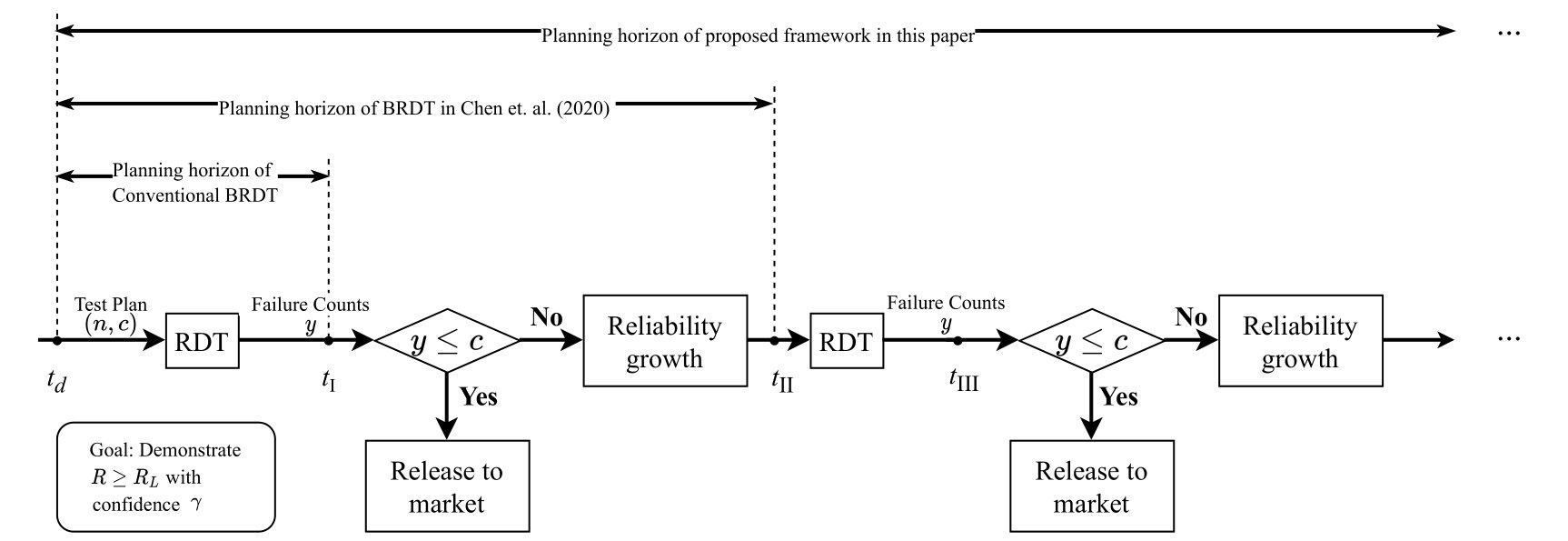
Descriptive diagram for illustrating the difference among different BRDT designs
Efficient approaches for scheduling problems
Faculty: Hadi Gard
Ph.D. student: Sasan Mahmoudi
The order acceptance scheduling problem is a complex optimization challenge that requires efficiently allocating orders to maximize various performance objectives, such as minimizing production costs or meeting delivery deadlines. In our project, we tackle this intricate problem by employing a novel approach that combines both heuristic and exact methods.
Heuristic methods offer quick and practical solutions by leveraging intuitive rules and strategies to guide the order allocation process. These heuristics allow us to rapidly generate feasible schedules, providing valuable insights and a baseline for comparison. Additionally, they help in reducing the computational burden of the problem, especially for large-scale instances.
On the other hand, exact methods, such as integer programming or combinatorial optimization techniques, enable us to obtain optimal or near-optimal solutions through rigorous mathematical formulations and algorithmic exploration. Despite their computational complexity, these exact methods ensure the optimality of the results, providing valuable benchmarks for evaluating the performance of the heuristic solutions.
By synergizing heuristic and exact methods, our project aims to harness the strengths
of each approach to strike a balance between computational efficiency and solution
quality. We believe that this integrated methodology will significantly enhance the
order acceptance scheduling process, leading to better decision-making, reduced costs,
and improved customer satisfaction. As we refine and validate our approach through
experiments and real-world data, we envision making meaningful contributions to the
field of operations research and production planning.
Transportation Systems: SOLVING VEHICLE ROUTING PROBLEMS
Faculty: Changhyun Kwon
Ph.D. student: Sasan Mahmoudi
We are currently engaged in two exciting projects. The first project involves tackling the Traveling Salesman Problem with a drone, also known as the Flying Sidekick Traveling Salesman Problem. In this endeavor, we are leveraging a combination of genetic algorithms, dynamic programming, and local searches to optimize the drone's route and find the most efficient solution for visiting multiple locations.

Our second project focuses on addressing the Multiple Traveling Salesman Problem. Here, we are applying a similar approach, employing genetic algorithms, dynamic programming, and local searches to devise optimal routes for multiple salespeople navigating various cities. By utilizing these powerful techniques, we aim to improve the efficiency and effectiveness of multiple traveling salesman scenarios, ultimately optimizing the delivery of goods or services.
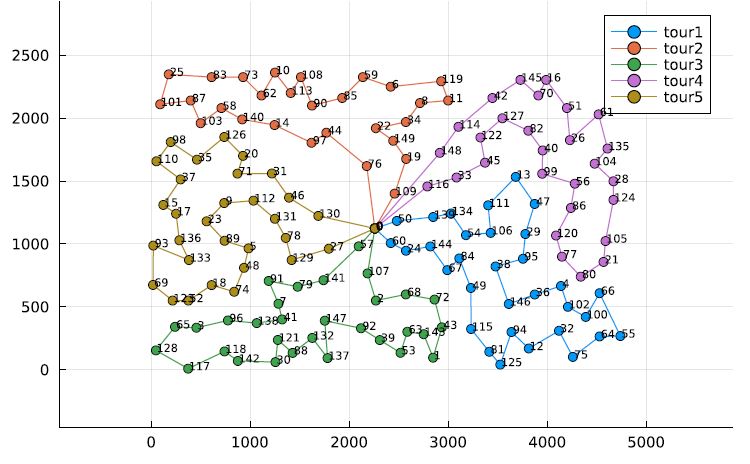
Both projects underscore our commitment to leveraging advanced algorithms and intelligent methodologies to tackle complex optimization problems. By combining the strengths of genetic algorithms and dynamic programming, we are dedicated to finding innovative solutions that streamline logistics, enhance productivity, and drive operational excellence.
Optimization of Energy-Efficient Neural Networks
Faculty: Susana Lai-Yuen
Ph.D. student: Esmat Ghasemi Saghand
Artificial neural networks (ANNs) have been very successful in many applications including image recognition, and autonomous vehicle control. However, ANNs require high computational power and resources to be deployed so they are mostly processed on large-scale computers or in the cloud. Consequently, there is a growing need for low-power neural systems that can be directly deployed on edge devices. We are investigating the next generation of neural networks called spiking neural networks (SNNs), which can provide a more energy-efficient and biologically plausible alternative to conventional ANNs. Given the inherent discrete and non-differentiable nature of SNNs, we are investigating and developing efficient training strategies and architectures for SNNs to improve their design and performance.
